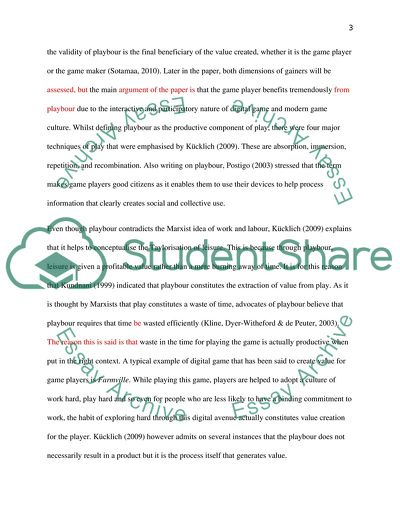Cite this document
(What is Playbour Essay Example | Topics and Well Written Essays - 2750 words, n.d.)
What is Playbour Essay Example | Topics and Well Written Essays - 2750 words. https://studentshare.org/social-science/1873117-what-is-playbour-provide-examples-from-digital-game-play-and-culture-and-critically-discuss-how-this-theory-challenges-the-conceptualization-of-digital-game-players-as-audiences
What is Playbour Essay Example | Topics and Well Written Essays - 2750 words. https://studentshare.org/social-science/1873117-what-is-playbour-provide-examples-from-digital-game-play-and-culture-and-critically-discuss-how-this-theory-challenges-the-conceptualization-of-digital-game-players-as-audiences
(What Is Playbour Essay Example | Topics and Well Written Essays - 2750 Words)
What Is Playbour Essay Example | Topics and Well Written Essays - 2750 Words. https://studentshare.org/social-science/1873117-what-is-playbour-provide-examples-from-digital-game-play-and-culture-and-critically-discuss-how-this-theory-challenges-the-conceptualization-of-digital-game-players-as-audiences.
What Is Playbour Essay Example | Topics and Well Written Essays - 2750 Words. https://studentshare.org/social-science/1873117-what-is-playbour-provide-examples-from-digital-game-play-and-culture-and-critically-discuss-how-this-theory-challenges-the-conceptualization-of-digital-game-players-as-audiences.
“What Is Playbour Essay Example | Topics and Well Written Essays - 2750 Words”. https://studentshare.org/social-science/1873117-what-is-playbour-provide-examples-from-digital-game-play-and-culture-and-critically-discuss-how-this-theory-challenges-the-conceptualization-of-digital-game-players-as-audiences.


